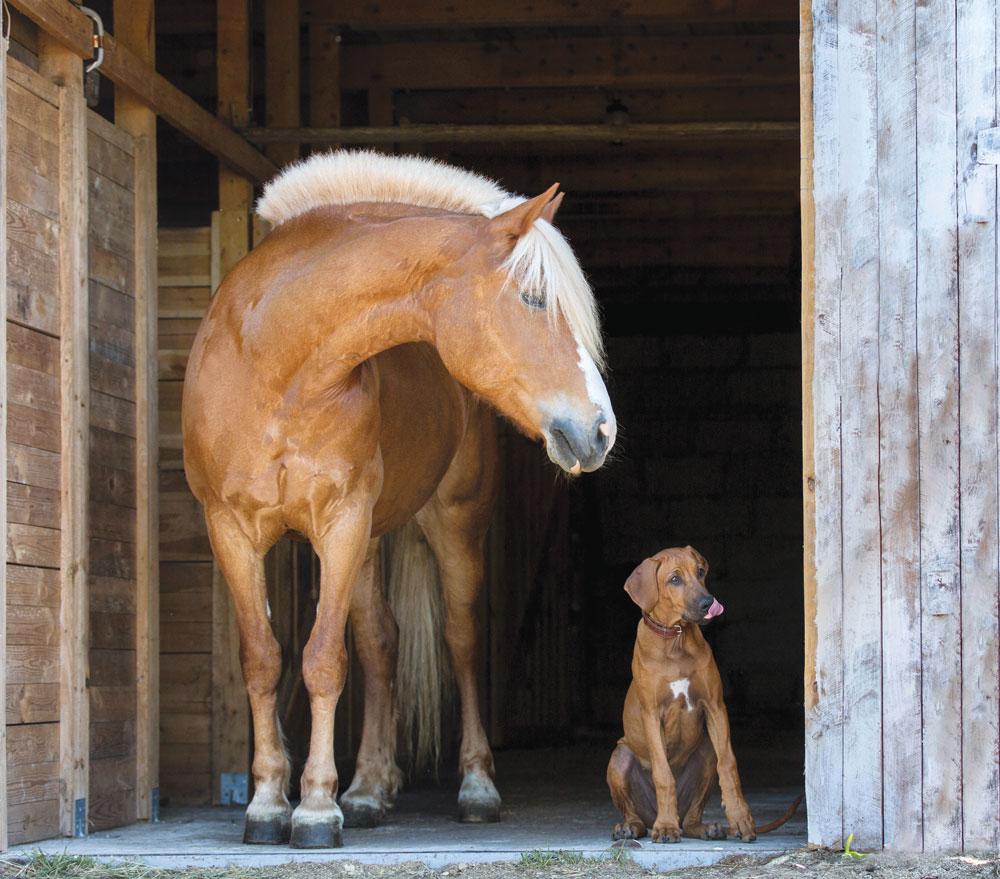Read on to learn how a horse vet was able to prove an incorrect diagnosis on a horse’s hoof and how they were able to save the horse from being put down.

Before I could speak, a loud woman in a floral shirt with blonde curls reached over my shoulder and pointed at the X-rays, bumping my cheek with her arm.
“I worked for a vet for five years. That’s a fracture right there!” She left a greasy fingerprint on my computer screen, pointing to a perfectly normal joint space in the lower leg.
The owner moaned in despair. I quickly said, “There’s no fracture. These are normal X-rays.”
But it was too late. The crowd was dispersing and I could hear the murmurs as they walked away.
“Poor thing. Going to have to put him down. Can’t fix a broken leg. It’s hopeless!”
“There’s no fracture!” I bellowed at the retreating figures. It was no use. This was a huge boarding facility, and I knew that the incorrect information would soon be all over the barn.
The owner looked at me hopelessly, tears in her eyes. “Do I have to put my horse down, Dr. Courtney?”
“For goodness sake, no!” I said impatiently. “Let me finish looking at him.”
I lifted the sore leg and ran my fingers over it again. I’d already checked the hoof with testers, palpated and flexed the joints, and had found nothing conclusive. I’d hoped the X-rays would give me some guidance, but no such luck. I called for a hose and washed the bottom of the hoof carefully and patted it dry with a towel.
Incorrect Diagnosis: A Sliver of Hope
Then I saw it. A tiny bead of yellow serum gathering on the sole of the foot. And the tiniest bit of wood protruding from the area. I seized a pair of forceps and extracted the offending sliver, enlarged the hole, then packed the foot with antiseptic and bandaged it. The sliver hadn’t gone in very far, and I knew the foot would respond well to topical treatment. The horse’s leg wasn’t broken, it was an incorrect diagnosis, but to be safe, I put the horse on antibiotics.
Relieved, the owner walked her horse off to a stall for the night, and I packed up my things and drove to my next call. Word had already reached the next barn that my client’s horse had a broken leg and I’d had to put him down. Grimly I set the record straight, knowing that this would be a recurring theme for the next few days of my life. It was a small town and word traveled fast, true or not.
Although I felt angry at the unnecessary drama, I couldn’t help but remember a situation once when my own careless words had landed me in some hot water, and I cringed at the memory.
Horse Vet: A Doggone Shame
I’d been an intern in my first few months of vet practice, and although I was part of an equine hospital, there was also a small-animal clinic associated with the business. We didn’t have much to do with them; they took care of their end and we took care of ours, but occasionally things overlapped.
I was on a farm call tending to a sick foal when the owner’s dog appeared, covered with skin sores.
I pointed at the dog. “What’s going on there?”
“Oh, he’s had it for a few weeks,” the owner sighed. “Looks awful, doesn’t it? I’ve taken him into your clinic twice, but we don’t seem to be getting anywhere with it.”
I sat up proudly. My mind was brimming with facts and figures, having had the dermatology rotation in vet school shortly before graduation. Without consideration for the vet who was treating the dog, I began to give a lecture on skin diseases and diagnostics, critiqued the current plan, and made several confident recommendations to the owner for the best approach to work up and treat the skin problem.
I felt pretty full of myself as she looked at me admiringly.
“Well thank you, Doc! I’ll call my vet right now!”
When I returned to the clinic that night, a figure in a white lab coat was waiting for me, hands on hips, and I got a dressing down I will never forget. And she was absolutely right to confront me. I’d butted in on her case, made incorrect assumptions, shown her no respect and given her no benefit of the doubt. My careless words had upset a situation that was under control. I learned a big lesson that day.
The Miracle Cure
The following week I was back in the big barn changing the dressing on the lame horse’s foot when the loud blonde woman who’d misread my X-rays walked by. The horse was putting weight on the leg and was generally much happier, and I waited to see what the woman would do.
Would she ignore me out of embarrassment? Would she apologize for being wrong? Clearly she was going to learn a big lesson from this, and the least I could do was to try to be kind.
“What are you putting on that foot?” she barked at me. I described the topical medications I was using and looked at her expectantly.
She shook her head.
“Well it’s strong stuff, that’s all I can say. I’ve never seen another medication heal a fracture as quickly as that did!”
This article about a horse vet proving an incorrect diagnosis originally appeared in the November 2019 issue of Horse Illustrated magazine. Click here to subscribe!





